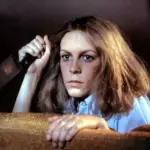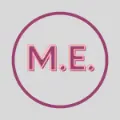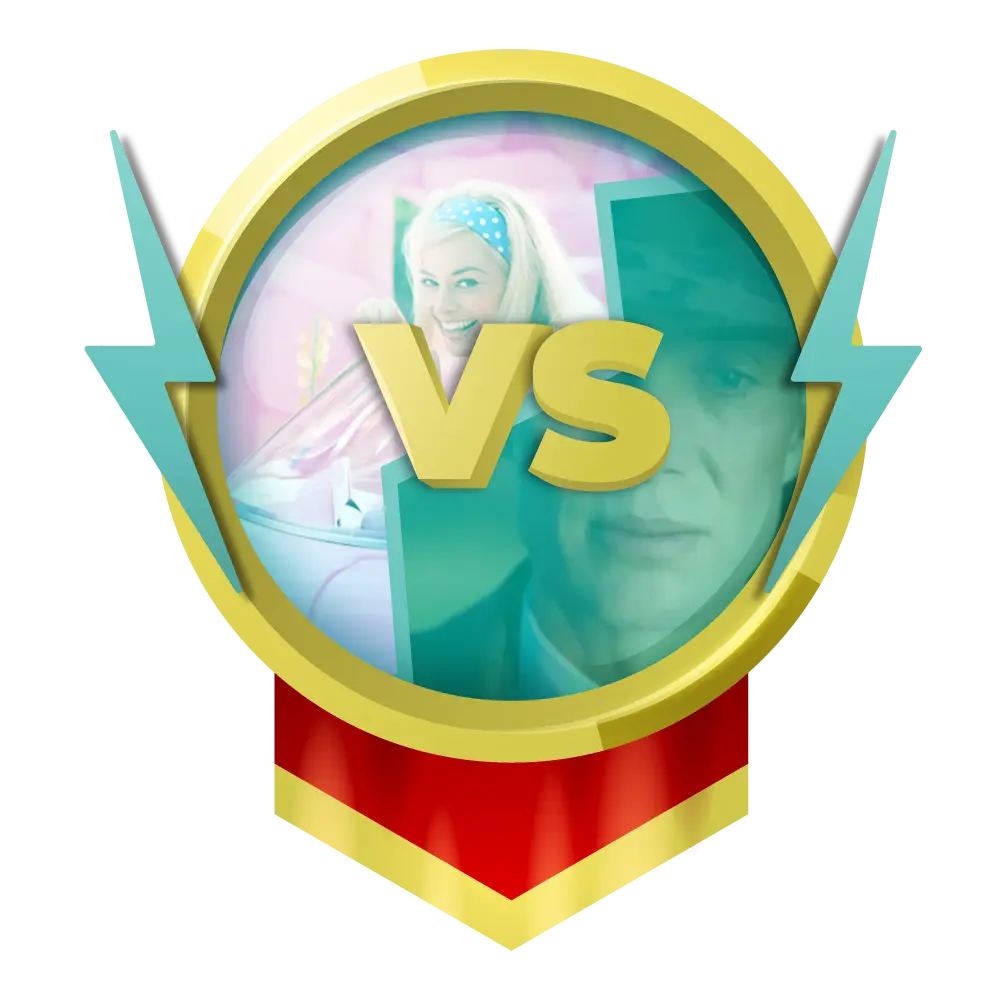Every generation believes the cartoons of their youth were the best, and I'm no exception. I strongly believe the cartoons of the 2000's earned that title not only because they're endlessly re-watchable or prime meme material (looking at you, Spongebob), but because they had a knack for creating iconic side characters who didn't just support the story, they commandeered the ship and raised their own flag.
Over the decade, a trend would emerge across many of the biggest IP’s in children’s entertainment, quietly ushering a fringe subculture into the mainstream consciousness. From best-friends and anti-heroes to villainesses, weird sisters, and love-interests — goth girl characters saturated the screens of our bulbous cathode-ray tube televisions, imprinting themselves into the impressionable psyches of an entire generation of young viewers.
These cartoons set a cultural precedent that continues to resonate today. A fringe group once seen as depressed weirdos and lonely outsiders has now practically become the ideal — almost to the point of obsession — and most of them weren't even the stars of their own shows.
Cultural Context
The rise of goth culture within the mainstream is commonly traced back to Wynona Ryder’s Lydia Deetz in Beetlejuice (1988). This is considered one of the first “positive” representations of goth characters in popular media. Lydia’s subversive characterization would spur an influx of sympathetic goth characters throughout the 90’s, peaking in the early-to-mid 2000’s.

At its core, goth is primarily a music subculture, with the trademark visual aesthetic a byproduct of the stage attire and makeup worn by goth-rock and post-punk bands of the time. Aside from being into goth music, there is no “checklist” of interests, traits, or ideals required to be considered “a true goth.” However, there are some general core values which simply exist because of the type of individuals who are drawn to the community.

So Why Goths?
As global politics have continued to push left over the years (though it certainly feels like we're going backwards these days), many of the progressive ideas driving the original musical artists, such as freedom of self-expression, gender-fluidity, and an embrace of general queerness have become commonly held beliefs. So naturally, increasing numbers of individuals have found themselves drawn to the relatable yet aspirational blend of mystery, rebellion, and vulnerability commonly exhibited by those within the goth community.
Animation often acts as a mirror and amplifier of contemporary youth trends and subcultures. So, in retrospect, it’s clear this influx of goth characterization wasn’t accidental. The subculture’s inherent visual appeal and progressive ideals were a perfect match for the shifting cultural landscape and animation boom of the 2000’s. This shift allowed creators to tap into deeper cultural and personal issues, creating goth characters who embodied these changing ideals and struck a heavy chord with the emerging generation.

Goth girls, once standing on the fringe, became iconic signifiers of an entire decade of animation. They imprinted themselves onto a generation of youths who — consciously or not — carried that aesthetic fixation into adulthood. These goth side-characters have influenced everything from personal style and romantic preferences to broader internet culture and lifestyle choices. While many aesthetics of this era have come and gone, goths remain — perhaps stronger than ever.
Notable Examples:
The Hex Girls
Scooby Doo and The Witch’s Ghost (1999) & Scooby Doo and the Legend of the Vampire (2005)
I was a major Scoobaholic as a kid — which shouldn't be a surprise to anyone who read my article on the franchise back in April. I rented these VOD movies from Blockbuster over and over and over again, and never could get sick of them. Now, as an adult, I own nearly all the OG Scooby Doo movies on VHS — barring a few I never had much of a personal connection to — often re-watching them on a small CRT in my bedroom whenever I need a hit of that sweet, sweet nostalgia.

The Hex Girls are easily the most beloved side-characters in the entire 50-year run of the Scooby-Doo franchise, despite only appearing in two direct-to-video features, and a small handful of episodes across several series. The eco-goth trio captured young audiences through their stylish blend of goth aesthetics, witchy imagery, and catchy tunes — who didn’t have a Limewire’d mp3 of “Earth, Wind, Fire, and Air” and “I’m A Hex Girl” downloaded onto their iPod Shuffle back in the day?
Their portrayals pushed the boundaries of what was generally accepted for mainstream children’s cartoons at the time and subverted goth stereotypes in the process, inspiring early explorations of sexuality for young boys and girls alike, and earning icon status within queer communities still to this day. And of course, who can forget the iconic cadence of FemShep herself, Jennifer Hale, as Hex Girls frontwoman Thorn?
Shego
Shego combined sleek and iconic two-tone character design with a memorably confident and sarcastic voice acting from Nicole Sullivan to create arguably the most beloved and influential Villainess in cartoon history. It’s no wonder her instantly recognizable costume has become such a prominent presence at conventions all over the world.

Shego was first introduced as nothing more than a henchwoman to Dr. Drakken. However, she quickly became a fan fav. Her rivalry with Kim and the subversive dynamic between herself and Drakken proved resonant, earning her an expanded role and greatly developed backstory as the series progressed. This culminated in a compelling and complex villainess who challenged traditional gender norms, and who viewers often found themselves cheering for over the show's titular character.
Gwen
Total Drama came in near the end of my cartoon era before I graduated to live action, but it has always held a special place in my heart due to its unapologetically Canadian qualities and more mature tone and sense of humour (as long as you’re not watching the horrifically censored US version).
With TDI being a parody of reality game shows like Survivor, the creators had the opportunity to sculpt a vastly diverse cast of characters — allowing characters to showcase their complex personalities by speaking directly to the audience in the outhouse confessional.

Enter: Gwen, one of the beloved leads of the show, immensely relatable in her teen angst, dry wit, and love of horror movies. Gwen challenged goth expectations by seemingly conforming to common stereotypes on the surface, but as the series progressed, her true nature was exposed. At first, she comes across bitter and sarcastic, showing vocal distaste for the “sheep” and whatever they’re into. However, at her core is a kind heart cautious of letting people in, unafraid to stand up for herself and her beliefs. Plus the colour scheme of her character design is top notch.
You wouldn't know it from episode 1 that Gwen would end up playing such a large role in the show — the series kicks off with 22 campers after-all. The spotlight — and the hearts of the audience — were up for grabs as much as the prize money at the end of the competition. With TDI coming in at the tail-end of the 2000's, one can't help but wonder if the creators took heed of the growing fascination with goth girls over the course of the decade, and seized the opportunity to finally put one in the forefront.
Sam Manson
I think Sam is the only television character on this list to actually self-proclaim themselves as goth. Sam made goth culture approachable, coming off much less dark and moody than most of her contemporaries, and wasn’t presented as some sort of mysterious outsider. Her goth identity was simply a part of her larger well-rounded personality rather than her single defining trait. She also held passionate stances regarding environmentalism and vegetarianism, which were both considered much more “radical” in the 2000's than they are today.

Her friendship dynamic with Danny and Tucker was grounded and authentic, and her goth qualities weren’t over-exaggerated nor ever a point of contention within the friend group. While many other characters in this list directly address the concept of “othering” by facing prejudices head-on within their storylines — such as Gwen’s constant clashes with Heather in TDI — Sam adversely addresses this concept in Danny Phantom by not addressing it at all. Through this lack of narrative conflict regarding her identity, Sam positions goth culture as something that can be seamlessly integrated into normal life, allowing young aspiring goths to grow confidence in their self-expression without fear of ostracization.
Raven
Raven, like the rest of the cast of the OG Teen Titans, provided an emotional depth rarely seen in children’s animation. Some of the storylines in the later seasons get pretty damn dark for a kids show. I’d argue this depth even played a role in the show’s demise — the writing becoming increasingly mature and complex until producers felt the show was no longer being aimed at its target audience, so it was unceremoniously cancelled. Now we're stuck with the disgustingly-animated and watered-down Teen Titans Go! instead. Yippee for us.

Raven’s brooding personality was expertly balanced with vulnerability and complexity thanks to the legendary voice acting from Tara Strong — who you may also know as Timmy Turner in The Fairly OddParents, Bubbles in The Powerpuff Girls, and Dil Pickles in Rugrats, among dozens of others in a career too storied to list if I'm to fit within the word count of this article.
Raven’s iconic character design, and the yearning for a proper send-off has kept her firmly in the hearts of fans, cementing Raven as an enduring cultural touchstone and mainstay for cosplayers everywhere.
Additional examples:
Iconic goth characters were far from limited to the above five. Countless other characters wore the badge of “the goth girl” or “goth-adjacent girl” in 2000’s animation. Even the following is not a comprehensive list, but merely a sample:




Examples in Anime:
This trend wasn’t limited to western animation either. Japan had its own goth craze for a while, with Misa Amane from Death Note being one of the most enduring and alluring of all. However, most eastern examples were definitively NOT for children.



But What About Goth Boys?
While cartoon goth boys certainly did exist, they were criminally underrepresented. Additionally, I find cartoon male equivalents more often lean towards punk, emo, or grunge archetypes instead. And when these characters do show up in the cast, they're usually competing against a more visually striking and sympathetic goth-girl counterpart — resulting in these “goth” boy characters being much less memorable and culturally significant in comparison.

The Trend's Lasting Legacy
With the amount of goth girls being thrown at us every day, on every channel, by every network, it’s no wonder why the subculture's hooks dug so deeply into our collective psyches. Many of the above characters have driven adult nostalgia for years now, retaining a strong internet presence via memes, fan art, and cringey TikTok fan edits. I bet you $5 any given Hot Topic will still have at least one Hex Girls shirt up on their wall, and how many times have you been to a Halloween event where someone is NOT dressed up as Shego?

I’ve been pretty tapped out of the cartoon world for a while now, so I’m not sure if this 2000's emphasis on goth characters is still as prevalent as it used to be, or if a different character archetype has hijacked the zeitgeist of Gen Alpha. Honestly, with how personalized internet algorithms have become, and how much more creator-focused so many young people seem to be these days, it makes you wonder if another mass cultural watermark such as this is even possible anymore.
Addressing the Darker Side of the Goth Obsession
Now, while the effects of this 2000’s cartoon “gothification” have undoubtedly been potent, they haven’t all been positive, and they've only been heightened in the age of social media dominance, which wasn't even a factor at the time these cartoons originally aired. Many people more qualified than me have made video essays on the “TikTokification” of goths, arguing why this manic-pixie-dream-goth obsession is harmful to both goth culture and women as a whole — either through the fetishization or dehumanization of goth individuals, the dilution of the original identity of goth culture, and certainly the hyper-sexualization of young women online.
This is where perspective and self-awareness come into play. Firstly, there’s nothing wrong with having preferences. You like who you like, and whether it be gender, height, nationality, style, or any other kind of physical trait, 99% of the time it’s not something you can control. However, it’s important to understand where this attraction may stem from. Where it comes from determines whether or not this attraction can be considered “problematic” or healthy.

If you’re a socially progressive individual who genuinely appreciates goth music and culture; you relate to the personality traits commonly associated with goth culture such as introspection, creativity, and intellectual curiosity; and/or respect the goth aesthetic without stereotyping those from within the subculture, then I think most people would consider that a genuine and healthy appreciation.
However, if you’re a more conservative-leaning individual who perceives goth women as “exotic” trophies or conquests, find yourself purely drawn to the aesthetic without respect for the individual, and/or actively dislike goth music, you may want to reflect on where this attraction stems from. Healthy attraction comes from genuine engagement and mutual respect — not superficial idealization.
I can’t tell you how many stories I’ve heard regarding the struggles my goth or goth-leaning friends have faced in their dating lives due to the stereotypes and fetishization of their culture by vast swaths of people — often men, but certainly not exclusively — who can’t seem to look past the surface aesthetic. As if modern dating — and even making platonic connections — wasn’t hard enough in the information age of isolation, it’s now easier than ever to harass, objectify, and exploit people online without any regard for the human beings underneath. This applies doubly for goth POC’s, those from the LGBT+ community, and triply for those of all three.
Ultimately, the line between appreciation and objectification comes down to respect, empathy, and genuine interest in the goth culture rather than superficial fantasy. By recognizing where these personal preferences stem from, individuals can form healthier, more authentic connections, embracing goth women as real, nuanced, multi-dimensional human beings rather than mere symbolic objects of desire. So perhaps it’s worth reflecting on why we’re drawn to goths, and what that says about us.





























































View replies 2
View replies 1
View replies 1
View replies 1
It's a shame those people who want to date a goth just for the aesthetic.
View replies 0
View replies 0
View replies 0
View replies 0